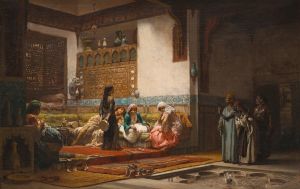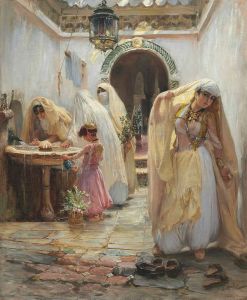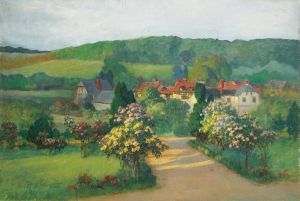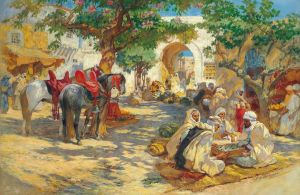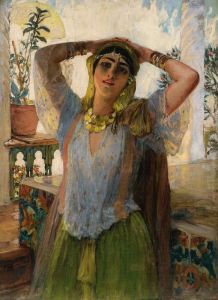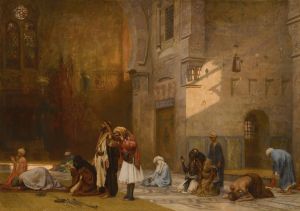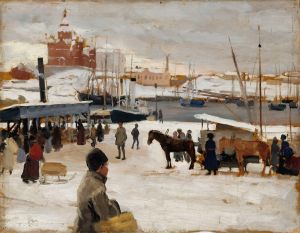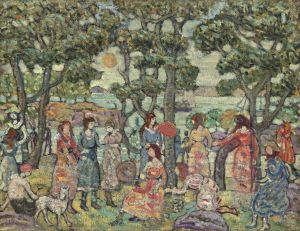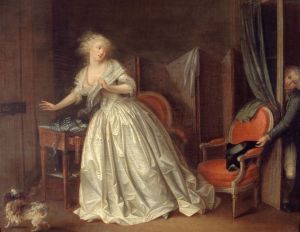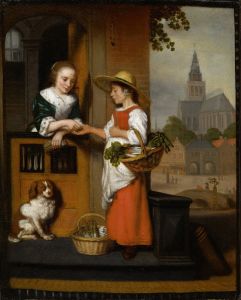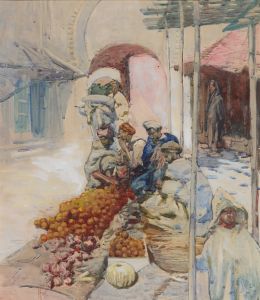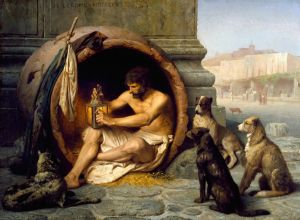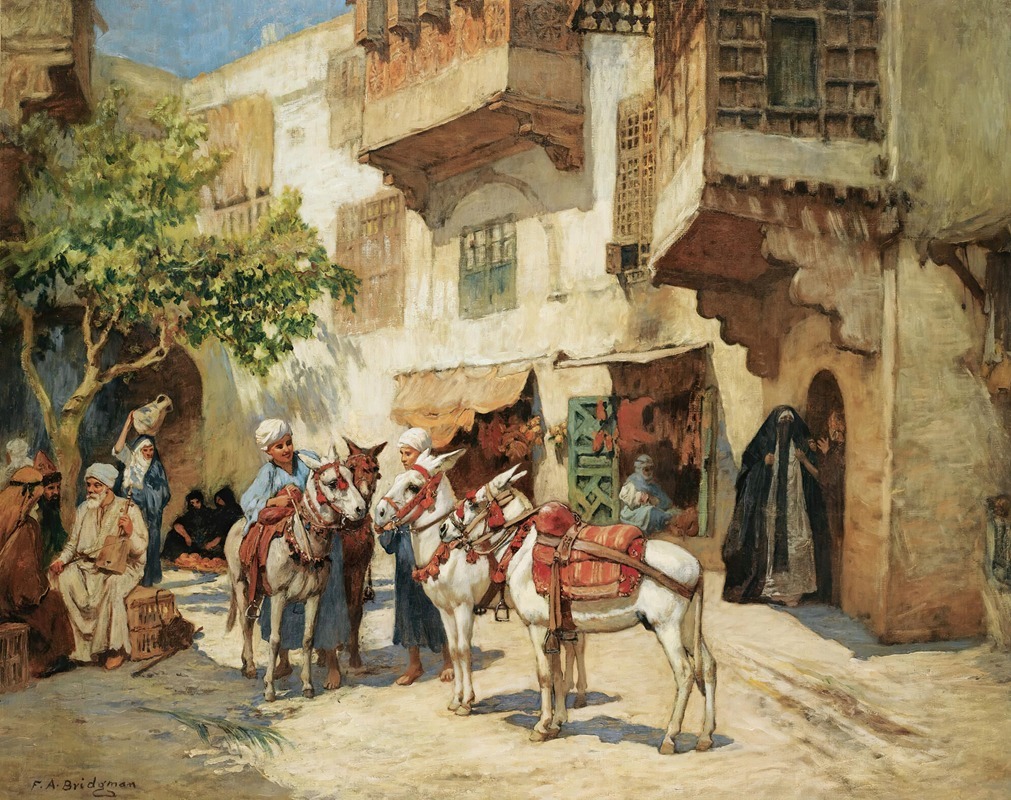
The market square
A hand-painted replica of Frederick Arthur Bridgman’s masterpiece The market square, meticulously crafted by professional artists to capture the true essence of the original. Each piece is created with museum-quality canvas and rare mineral pigments, carefully painted by experienced artists with delicate brushstrokes and rich, layered colors to perfectly recreate the texture of the original artwork. Unlike machine-printed reproductions, this hand-painted version brings the painting to life, infused with the artist’s emotions and skill in every stroke. Whether for personal collection or home decoration, it instantly elevates the artistic atmosphere of any space.
Frederick Arthur Bridgman (1847–1928) was an American artist renowned for his Orientalist paintings, which captured the imagination of the Western world with their vivid depictions of North African and Middle Eastern scenes. Bridgman was born in Tuskegee, Alabama, and later moved to New York City, where he began his artistic training. He further honed his skills in Paris, studying under the tutelage of Jean-Léon Gérôme, a prominent French painter known for his own Orientalist works. Bridgman's time in Paris and his travels across North Africa significantly influenced his artistic style and subject matter.
"The Market Square" is one of Bridgman's many works that reflect his fascination with the daily life and culture of the regions he visited. While specific details about this particular painting are scarce, it is consistent with Bridgman's broader oeuvre, which often depicted bustling marketplaces, serene landscapes, and intimate domestic scenes. His paintings are characterized by meticulous attention to detail, vibrant colors, and a keen interest in the interplay of light and shadow, all of which serve to bring his scenes to life.
Bridgman's work is often noted for its ethnographic detail, capturing the clothing, architecture, and customs of the people he observed. This attention to detail was not merely artistic but also reflected the 19th-century Western interest in the "exotic" cultures of the East. Bridgman, like many of his contemporaries, was part of the Orientalist movement, which sought to portray the East as a place of romance, mystery, and adventure. While these depictions were popular and influential, they have also been critiqued for perpetuating stereotypes and for their often romanticized and sometimes inaccurate portrayals of Eastern cultures.
"The Market Square," like many of Bridgman's works, would likely have been painted with oil on canvas, a medium that allowed him to achieve the rich textures and vibrant colors for which he is known. His paintings often feature a composition that draws the viewer into the scene, inviting them to explore the various elements and figures depicted. The market scenes typically include a variety of characters, from merchants and buyers to animals and children, each contributing to the dynamic and lively atmosphere.
Bridgman's paintings were well-received in his time, and he exhibited widely, including at the Paris Salon, where he won several medals. His works were also popular in the United States, where they were collected by prominent figures and institutions. Today, Bridgman's paintings are held in various public and private collections, and he is remembered as one of the leading American Orientalist painters of the 19th century.
In summary, while specific information about "The Market Square" by Frederick Arthur Bridgman is limited, it can be appreciated within the context of his broader body of work, which captures the vibrancy and diversity of the cultures he encountered during his travels. Bridgman's legacy lies in his ability to transport viewers to distant lands through his detailed and evocative paintings, offering a window into a world that fascinated the Western imagination of his time.





